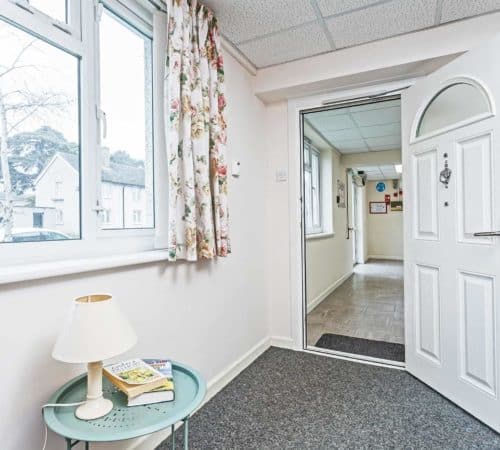Safety in Numbers – Importance of Early Engagement Between Architects and Fire Door Manufacturers
Posted: 13th October 2021
Dave Walker of Distinction Doors explores how early engagement between architects and product manufacturers will be key to helping the industry design and construct safer buildings, post-Grenfell.
When speaking with architects and other product manufacturers, one point which comes up again and again is the need for early engagement on projects. While the new national construction products regulator will give confidence to architects and specifiers, the success of these reforms will lie in collaborative working.
New National Construction Products Regulator
Operating within the Office for Product Safety and Standards, the new regulator has been set up to ensure construction materials are safe. It will have the authority to “remove any product from the market that presents a significant safety risk” and will be able to conduct its own product testing when investigating concerns.
Some of the concerns to be addressed by the regulator will include those heard in the Grenfell Inquiry, namely “Malpractice by some construction product manufacturers and their employees, and weaknesses of the present product testing regime.”
Commenting on the new initiative, Lord Porter, the Local Government Association’s building safety spokesperson, said: “It is good that the Government has listened to councils’ concerns and announced a review into testing. We have previously raised concerns about the role of the test houses in the mass failure of glass reinforced plastic (GRP) fire doors following the Grenfell Tower tragedy.”
With the Building Safety Bill expected to be enforced within two years, the wider construction industry understands that traceability will be fundamental to the future of fire safety. Architects, especially Principal Designers (named as duty holders under the reforms), will undoubtedly welcome this new regulator. It will promote competence and quality in the construction industry and enforce greater responsibility in the supply chain.
Golden Thread of Information
For designers of tall buildings, easy access to high level information will be essential in maintaining the ‘golden thread’ of information – an obligation within the new legislation. In time, every architectural practice will have its own golden thread. Yet, there are no indicators on how this information should be stored or updated. To overcome this and aid the transition, the RIBA launched its own Fire Safety Compliance Tracker this summer.
In recent years several GRP composite fire door system houses, and members of the Association of Composite Door Manufacturers, have taken steps which go some way to meet the demand for product traceability – gaining third party certification and taking control of their supply chain. This not only significantly reduces risk, but also promotes stakeholder confidence.
Early consultation
In the past, specialist design elements have occurred too late, leading to ambiguities and omissions which do not coordinate with the original design. There is also the issue of value engineering, which can compromise the integrity of the fire safety design. Early consultation with product manufacturers and other specialist sub-contractors would alleviate this. Their expertise and knowledge can be used to inform the overall fire safety design and aid the design and specification of fire safety measures before construction begins.
We are hopeful that while this initiative is driven by the Building Safety Bill which relates to higher-risk, high-rise buildings, it will be a driver for change across the built environment. Early engagement is critical for safer buildings.
Test Evidence and Transparent Information
To prepare and support early consultation, product manufacturers have a duty to provide access to clear and transparent product information, e.g. BIM models, technical data and test evidence. This is particularly pertinent for fire safety products, especially test data. Test evidence should be made readily available in a digital format. Proof of independent third-party testing offers reassurance to all stakeholders, demonstrating that the product has been verified by an expert and is publicly available.
Fire doorsets, for example, should be third-party tested and certificated using an independent United Kingdom Accreditation Service (UKAS) accredited test house.
The tests were conducted in three countries, using three variations of supporting wall construction – 150 mm and 225 mm rigid aerated block and flexible steel stud construction.
Ready access to this level of test data is invaluable not only for architects, but to ease concerns and meet the demands of the national construction products regulator.
Architects must demand more from product manufacturers; better quality information and innovation. It would educate and promote a greater understanding of the products being specified; how they should be installed and more importantly, in the case of fire protection and prevention products, how to maintain them.
Reproduced by kind permission of netMAGmedia.
As featured in Architect’s Datafile.

